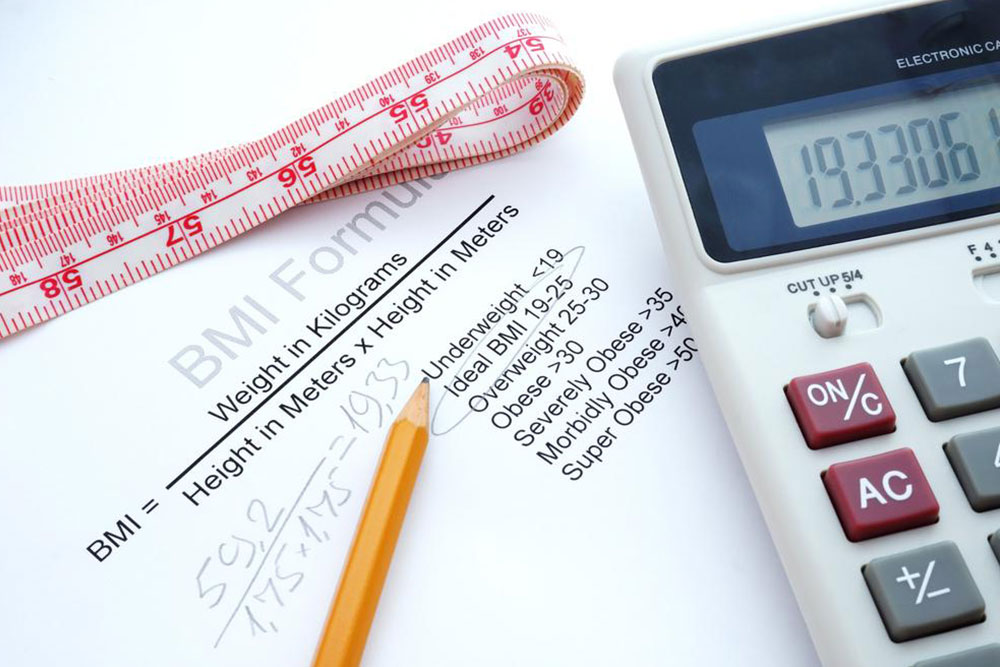Comprehensive Guide to Monitoring and Maintaining Your Body Fitness for Better Health
This comprehensive guide emphasizes the importance of monitoring BMI and maintaining overall body fitness. It explains how to calculate BMI accurately, interpret its classifications, and why it’s vital for health assessment. The article offers practical tips on achieving a healthy weight through regular exercise, balanced nutrition, and lifestyle changes. Emphasizing the limitations of BMI, it advocates for a holistic approach to body health. Whether you're looking to lose weight, build muscle, or stay healthy, this in-depth resource provides essential insights and strategies to help you reach your fitness goals effectively.

Comprehensive Guide to Monitoring and Maintaining Your Body Fitness for Better Health
Maintaining a healthy body weight and overall fitness is essential for a good quality of life. One of the most crucial indicators used by health professionals to assess body health is the Body Mass Index (BMI). This simple yet effective metric helps individuals understand their body composition relative to height and weight, offering insights into potential health risks such as obesity, malnutrition, or other metabolic conditions. Whether you are aiming to lose weight, gain muscle, or simply stay healthy, understanding how to monitor and manage your BMI is an important step towards achieving your fitness goals.
Body Mass Index, or BMI, is a numerical value calculated based on your height and weight. Developed in the 1830s by Belgian mathematician Lambert Quetelet, BMI has become a widely used tool in health screening and research. Although it has its limitations, BMI provides a quick reference point for assessing whether your body weight falls within a healthy range. This article will explore the principles of BMI, how to accurately calculate it, why monitoring this metric is important, and effective strategies to maintain or improve your body fitness over time.
Understanding your BMI begins with knowing how it’s calculated. For those using the metric system, the formula involves dividing your weight in kilograms by the square of your height in meters (kg/m²):
Calculating BMI in metric units:
BMI = weight (kg) / height (m)²
For those more comfortable with the imperial system, the formula adjusts to pounds and inches:
Calculating BMI in imperial units:
BMI = 703 × weight (lb) / height (in)²
These formulas generate a numerical value that categorizes your body weight into different health ranges.
Why Should You Monitor Your BMI?
Regularly checking your BMI provides valuable insights into your overall health status. Healthcare professionals use BMI to evaluate the risk of metabolic syndromes, cardiovascular diseases, diabetes, and other health conditions. For individuals, understanding their BMI helps facilitate better decision-making regarding lifestyle, diet, and exercise routines. It also serves as a motivational tool—tracking changes over time can motivate progress toward a healthier body composition.
Understanding BMI Classifications and Their Significance
Underweight: BMI below 18.5 — this may indicate malnutrition or other underlying health issues.
Normal or healthy weight: BMI between 18.5 and 24.9 — generally considered optimal for good health.
Overweight: BMI between 25 and 29.9 — increased risk of health problems associated with excess body fat.
Obesity: BMI of 30 or above — significantly higher risk for diabetes, hypertension, and cardiovascular disease.
The Limitations of BMI and Considerations
While BMI is a useful screening tool, it has limitations. It doesn't distinguish between muscle and fat mass, meaning muscular individuals may be classified as overweight or obese despite having low body fat. Similarly, older adults with muscle loss may have a low BMI but high body fat percentage. Other factors like bone density, ethnicity, and body shape can influence BMI's accuracy.
Therefore, BMI should be used in conjunction with other assessments, such as body fat analysis, waist circumference, and overall fitness evaluations to get a comprehensive picture of health and body composition.
Strategies to Maintain and Improve Your Body Fitness
Achieving and maintaining a healthy BMI requires a balanced approach involving diet, physical activity, and lifestyle adjustments. Here are some effective strategies:
Regular Exercise: Incorporate both aerobic and strength training exercises into your routine. Aerobic activities like walking, running, cycling, and swimming help burn calories, while resistance training builds muscle mass, which boosts metabolism.
Nutritious and Balanced Diet: Focus on whole foods, including fruits, vegetables, lean proteins, whole grains, and healthy fats. Limit processed foods, sugary snacks, and high-calorie beverages that contribute to weight gain.
Consistent Hydration: Drinking plenty of water aids digestion, keeps you full, and supports overall bodily functions.
Mindful Eating: Practice eating slowly, savoring your food, and paying attention to hunger and fullness cues to prevent overeating.
Sleep and Stress Management: Adequate sleep and effective stress management are crucial for maintaining hormonal balance and preventing weight gain caused by emotional stress or sleep deprivation.
Regular Monitoring: Keep track of your weight, BMI, and body measurements periodically to assess progress and adjust your routines as needed.
Conclusion
Monitoring and maintaining a healthy body weight through BMI is a practical and effective approach to safeguarding your health. While it should not be the sole measure of health, BMI provides a valuable starting point for assessing your body composition and risk factors. Combining BMI monitoring with regular physical activity, balanced nutrition, and healthy lifestyle choices can significantly improve your overall well-being. Remember, a consistent, holistic approach tailored to your individual needs is the key to long-term fitness success. Prioritize your health today by staying informed and proactive about your fitness journey.





